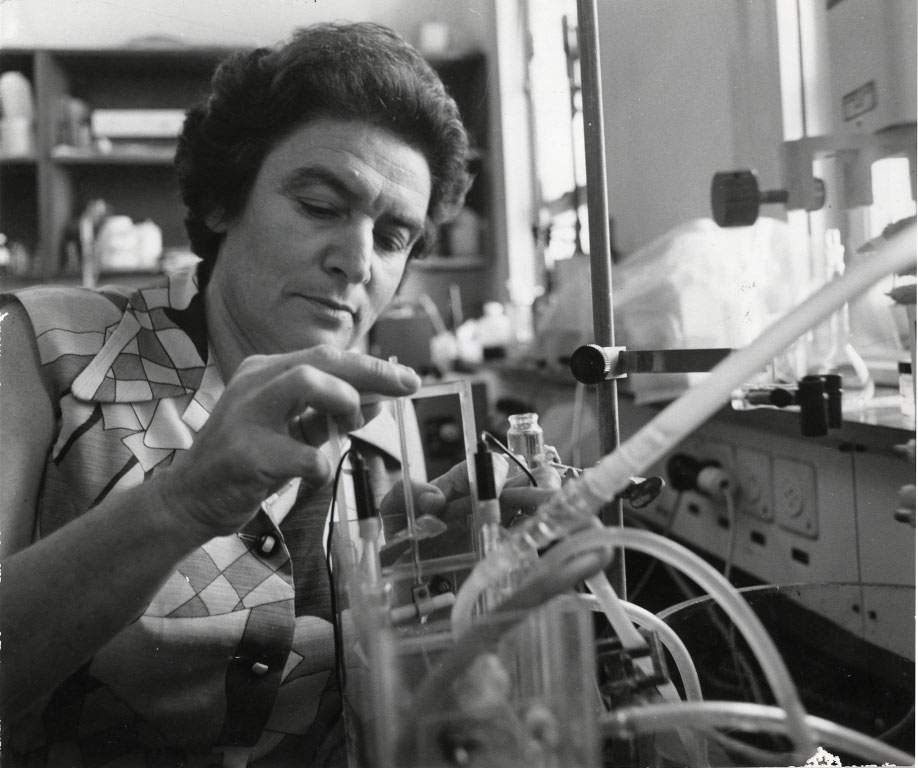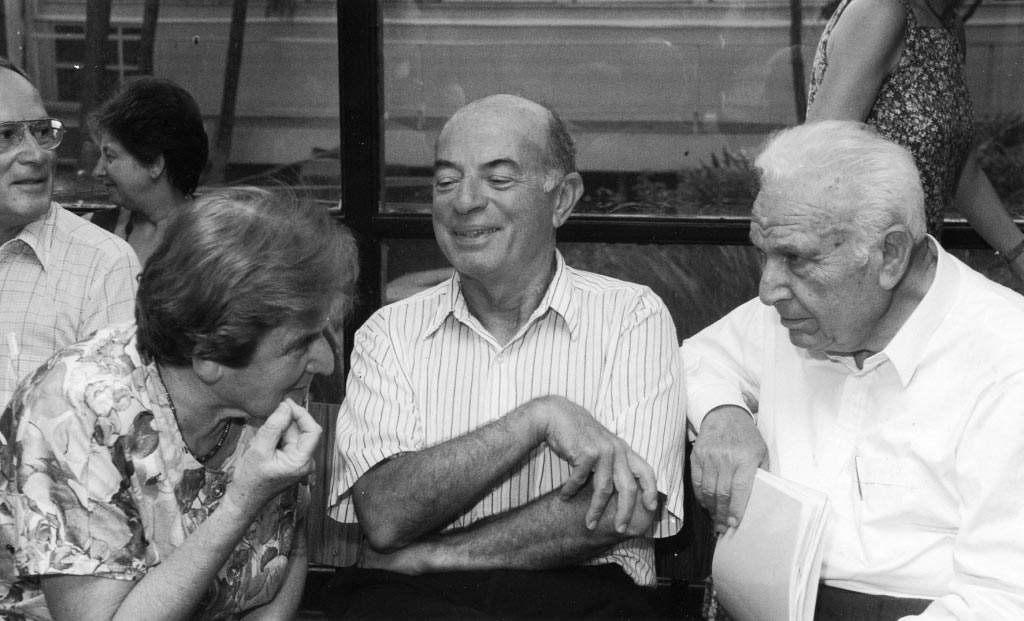Upon reaching shore with nothing but the wet clothes on their backs, the passengers were met by local citizens (the “Yishuv”) who provided them with dry clothes. The British police transferred them to the detainment camp at Atlit, where they received modest but adequate shelter, food and beds; in the new arrivals’ view, these were wonderful after all they had been through. Ora did not stay there long: After teaching herself Hebrew (in addition to the lessons given in the camp), she enrolled in the Levinsky Seminar for teachers, hoping to realize her dream of becoming a teacher in Israel. While studying, she helped support her family by working as a cleaner and tutoring in physics, as well as helping care for her frail sister.
By the outbreak of the War of Independence, she had managed to complete a master’s thesis on the absorption of bromine at the Hebrew University’s Mount Scopus campus under Prof. Ladislaus Farkas, founder of the Chemical Physics Department there, and Dr. Rudolph Bloch, the head scientist at the Dead Sea Works. To conduct her research, she had constructed her own specialized glass instruments.
During the War, Ora served in the Science Corps of the Hagana under the command of Prof. Aharon Katzir. During the siege of Jerusalem they made flares and land mines, among other things. Ora was responsible for a group of young women who prepared the materials. She met Abraham Kedem, the man whom she would later marry, while on guard duty: He was responsible for the mechanics of the Corps.
When Ora arrived at the Weizmann Institute, she was still a member of the Hagana Science Corps, but she soon began work on her doctoral research under Katzir. As before, she built her own lab equipment, with some help from the Institute’s technical staff. Here she also received such “exact” instructions as: “Parts for instruments are to be found in the warehouse; assemble as described in the literature.”
Because the young institute lacked experts on many subjects, each of the students adopted a subject, researched it and lectured on it to the others in group seminars. Ora took upon herself the subject of membranes. By chance she came upon a book on plant physiology describing experiments that tied in closely with the theoretical work on membranes with which she was familiar, and this serendipitous connection led her to author, with her mentor, Prof. Katzir, a number of articles on transport in biological membranes. These articles, published beginning in 1957, opened new horizons in their field, and they were enthusiastically received. This research earned Prof. Aharon Katzir and Ora Kedem the Israel Prize for the natural sciences in 1961.
She has been researching membranes ever since, and her achievements in the field have led to international recognition.
In 1967, the head of Israel’s Atomic Energy Commission,
Prof. Israel Dostrovsky, invited Kedem to join its research facility in the Negev. There she was given the task of reorganizing the chemistry department. She established a tradition of recruiting young talent and, at the same time, she taught courses in the academic centers in Beersheva that would later become the Ben-Gurion University of the Negev.
In 1972, just as Kedem was returning from a sabbatical in Basel,
Prof. Aharon Katzir was killed in a terrorist attack on the airport. She was asked to continue the membrane research at the Weizmann Institute, where she went on to found the Membrane Research Department – today the Biological Chemistry Department.
Kedem also had a hand in an early Israeli startup company. Together with Dr. Rene Bloch, a postdoctoral fellow in her group, she founded a company that was only the second firm to put down roots in the new Kiryat Weizmann Science Park, alongside the Institute. Their company, originally known as Research Products Rehovot, was later renamed Membrane Products Weizmann. In 1976, she served as scientific director of the company. She then retired from the Weizmann Institute, going on to join the faculty of Ben-Gurion University, first as an adviser and then, from 1995-2003, as head of the Desalinization and Water Treatment Department.
Prof. Ora Kedem has earned much recognition and esteem, as well as numerous prizes and honors, in part for her untiring efforts to find solutions to water quality problems in Israel. She has never stopped working: Recently, she and her husband, Abraham, added yet another patent to their name.


